Sea Cucumber
Holothuroidea
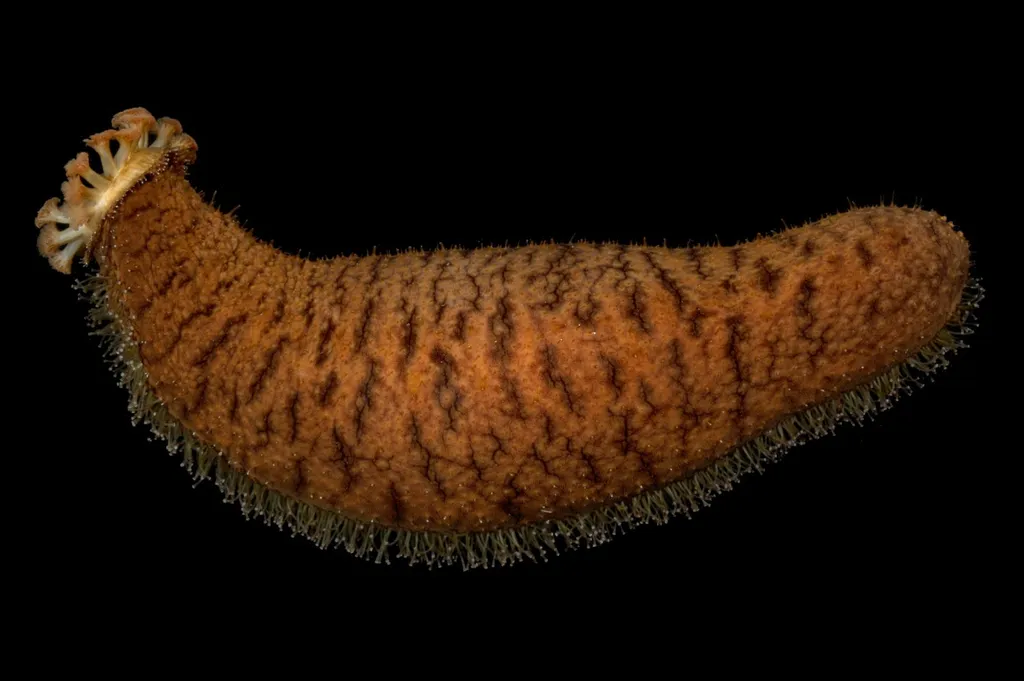
At first glance, sea cucumbers might seem like the ocean's most uneventful residents - lumpy, slow-moving "sausages" scattered across the seafloor. But don't be fooled by their humble appearance! These echinoderms (cousins to starfish and sea urchins) are ecological superheroes, recycling nutrients by processing seafloor sediments. Even more fascinating, they've evolved one of nature's most bizarre defense mechanisms: when threatened, they can expel their internal organs and grow them back within weeks. For divers, encountering sea cucumbers offers a glimpse into the weird and wonderful world of regeneration, symbiosis, and survival strategies that seem straight out of science fiction.
🔬Classification
📏Physical Features
🌊Habitat Info
⚠️Safety & Conservation
Identification Guide
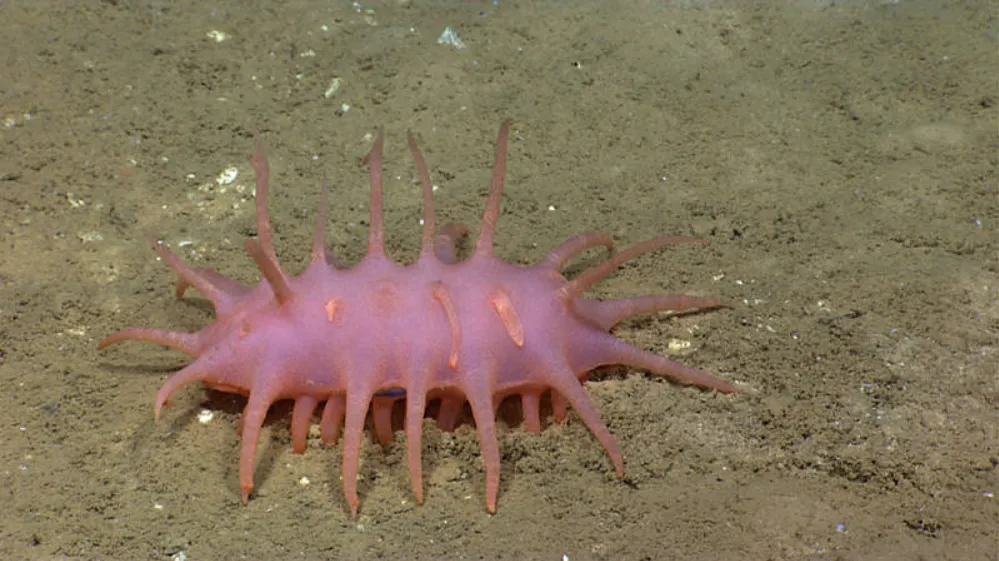
- Body Shape: Cylindrical, sausage-like body that can range from soft and fleshy to firm and leathery
- Surface Texture: Can be smooth, warty, spiky, or covered in tube feet (podia)
- Feeding Tentacles: Look for feathery or branching tentacles around the mouth (oral end), used to collect food
- Movement: Extremely slow-moving; they contract their body muscles and use tube feet to creep along
- Color Camouflage: Body color often matches their habitat (sandy cucumbers are pale, reef dwellers may be darker)
- Size Variation: From tiny 3cm species to giants over 3 meters long
Top 10 Fun Facts about Sea Cucumber

1. The Ultimate Survival Trick: Self-Evisceration
When a sea cucumber feels threatened by a predator, it performs one of nature's most dramatic escapes: it violently contracts its body and expels its entire digestive system, respiratory organs, and sometimes its gonads through its anus (or occasionally its mouth). This ejected mass of sticky, often toxic tubules (called Cuvierian tubules) entangles and confuses the attacker, giving the sea cucumber time to escape. Some species' expelled organs even contain potent toxins that can kill fish trapped in the sticky mess. The sea cucumber, meanwhile, simply regenerates all these organs over the next 2-3 weeks to several months, as if it were just shedding an old coat.
2. Regeneration Masters
Sea cucumbers possess superpowers of regeneration that would make any superhero jealous. Not only can they regrow their internal organs after evisceration, but if cut into 2-3 pieces, each fragment (as long as it includes part of the cloaca) can potentially regenerate into a complete individual. Lost tube feet? Regrown in 25-33 days. Severed body spines? Back in 30 days. Scientists are intensely studying this ability, hoping to unlock insights that could revolutionize human tissue regeneration and wound healing.
3. The Ocean's Vacuum Cleaners
Sea cucumbers are the unsung heroes of marine ecosystems, functioning as biological recyclers. They spend their days slowly moving across the seafloor, vacuuming up sediment, detritus, decaying organic matter, and algae. After digesting the edible bits, they excrete clean sand, effectively filtering and cleaning the ocean floor. A single sea cucumber can process several kilograms of sediment per year, playing a crucial role in nutrient cycling and maintaining healthy reef and seabed ecosystems.
4. Uninvited Guests: The Pearlfish Roommates
Perhaps the strangest relationship in the sea involves pearlfish - slender, eel-like fish that live inside sea cucumbers' bodies. These fish find the sea cucumber's cloaca (the combined digestive and respiratory opening) and slip inside to use it as a safe shelter. While some pearlfish are polite guests, others are freeloaders who feast on the sea cucumber's gonads and internal organs. Fortunately for the sea cucumber, its regenerative powers mean it can simply regrow what the pearlfish eat. Sometimes, multiple pearlfish will inhabit the same sea cucumber - researchers have found up to 15 fish crammed inside a single host!
5. Breathing Through Their Bottom
Sea cucumbers have evolved a unique respiratory system: they breathe through their anus. They rhythmically pump water in and out of their cloaca, which leads to a branching network of respiratory trees inside their body. These tree-like structures extract oxygen from the water. This breathing rhythm is actually how pearlfish know when to enter - they watch for the cloaca to open during the breathing cycle and quickly dart inside.
6. Chemical Weapons: Holothurin Toxin
Many sea cucumber species produce a potent defense chemical called holothurin (also known as sea cucumber saponin), stored in their body walls and Cuvierian tubules. This toxin is deadly to many marine animals, causing muscle paralysis and rupturing red blood cells. If threatened, they can release this toxin into the surrounding water, creating a toxic cloud. For divers, touching certain species can cause skin irritation, and getting the toxin in your eyes can cause temporary blindness. Interestingly, sea cucumbers have evolved immunity to their own poison.
7. Shapeshifters of the Reef
Sea cucumbers can dramatically alter their body consistency - a defense mechanism called variable tensile strength. When threatened, they can make their body rigid and hard like leather, or conversely, they can liquefy their tissues to become almost gelatinous, allowing them to squeeze through impossibly narrow crevices to hide. This shape-shifting ability is controlled by specialized connective tissues that can change from firm to fluid in seconds.
8. Ancient Lineage
Sea cucumbers have been around for at least 450 million years, surviving multiple mass extinction events. Fossil records show they've remained relatively unchanged, making them true "living fossils." They've witnessed the rise and fall of dinosaurs and have outlasted countless other species that came and went.
9. Culinary Gold
In Asian cuisine, particularly Chinese, sea cucumbers (called "hǎishēn" 海参) are considered a luxury delicacy and are believed to have medicinal properties. The dried product, known as bêche-de-mer or trepang, can sell for hundreds of dollars per kilogram. This high value has led to severe overfishing in many regions, with some species now threatened or endangered. The commercial trade has created a "sea cucumber crisis" in many Indo-Pacific waters.
10. Deep Sea Survivors
While many sea cucumbers live in shallow waters, some species inhabit the deepest parts of the ocean. They've been found thriving at depths exceeding 10,000 meters in the Mariana Trench, making them one of the deepest-living animals on Earth. In these extreme environments with crushing pressure and near-zero temperatures, sea cucumbers make up a significant portion of the biomass, demonstrating their incredible adaptability.
Diving & Observation Notes
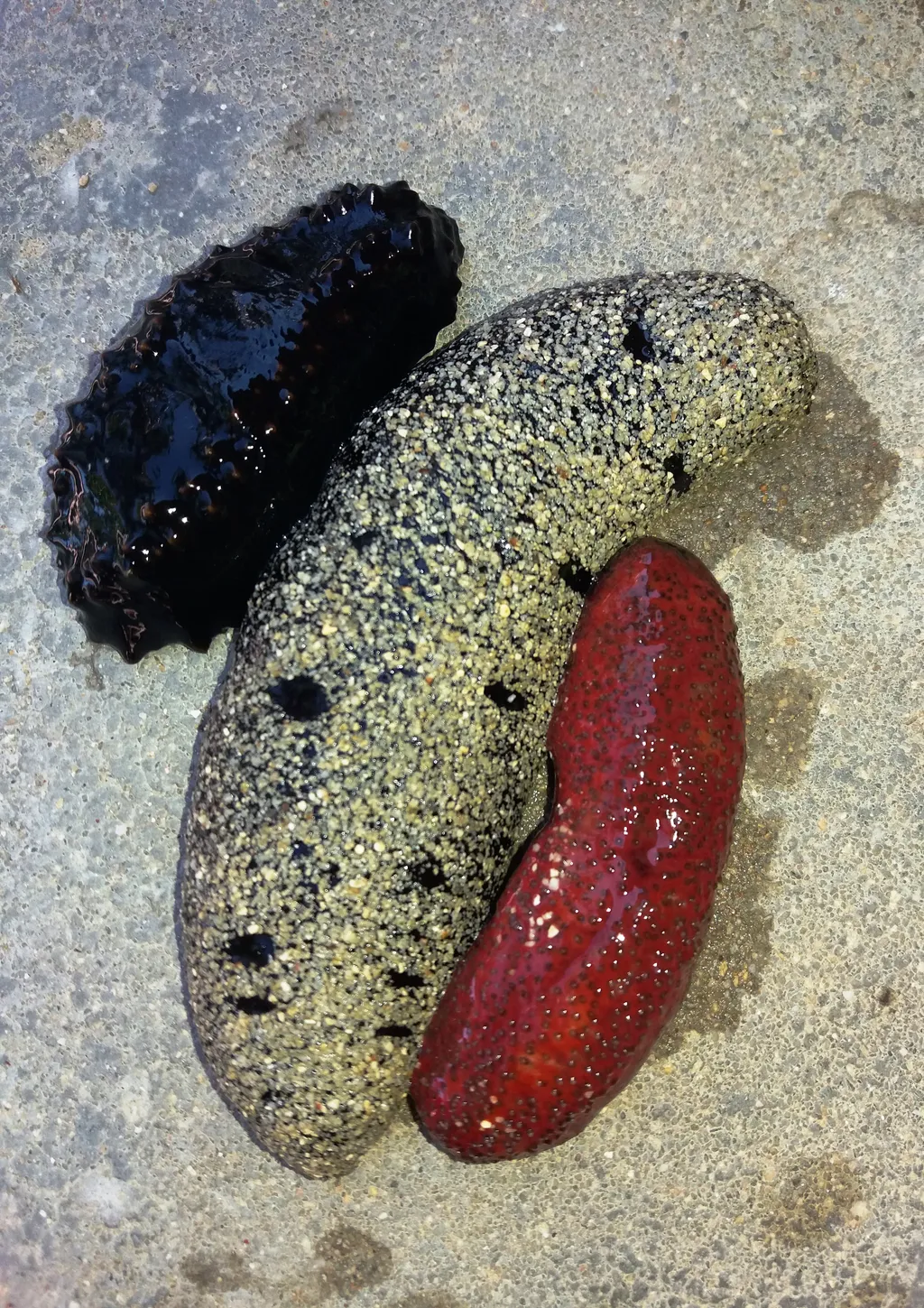
What to Look For
Sea cucumbers are everywhere on the reef if you know where to look. Check sandy patches between coral heads, under ledges, and in seagrass beds. During night dives, you'll see them more active, with their feeding tentacles fully extended like little trees collecting detritus. Some species form aggregations during breeding season - you might see dozens clustered together, standing on their tails in a bizarre underwater gathering.
Species highlight: Look for the Leopard Sea Cucumber (Bohadschia argus) with its stunning spotted pattern, or the bright Pineapple Sea Cucumber (Thelenota ananas) with its distinctive orange papillae.
Symbiotic Encounters
Keep an eye out for commensal relationships. You might spot tiny emperor shrimps (Periclimenes imperator) riding on sea cucumbers, their vibrant purple and white colors contrasting beautifully with their host. These shrimps clean the sea cucumber while getting free transportation and protection. If you're incredibly lucky on a night dive, you might witness a pearlfish entering or exiting its sea cucumber host through the cloaca - it's an unforgettable sight!
Photography Tips
- Get low: Sea cucumbers look best photographed at their level against the sand
- Tentacle shots: Macro photographers should focus on the feeding tentacles at the oral end - they're beautifully intricate
- Symbiont hunting: Search for emperor shrimps, cardinalfish, or small crabs living on or near sea cucumbers
- Backlit excellence: If you find a transparent or translucent species, backlighting can reveal their internal structure
Safety and Ethics
DON'T TOUCH! While it might be tempting to pick up these seemingly harmless blobs, resist the urge:
- Some species secrete holothurin toxin that can cause severe skin irritation or eye damage
- Handling them can trigger evisceration - stressing the animal and forcing it to expel its organs
- The sticky Cuvierian tubules they eject can be impossible to remove from your wetsuit and gloves
- Over-handling contributes to population stress, especially for commercially valuable species
If you do accidentally touch one, rinse your hands thoroughly and avoid touching your face or eyes before washing. If skin irritation occurs, soak the affected area in hot water and seek medical attention if symptoms persist.
Conservation Awareness
Many sea cucumber populations are severely overfished for the Asian market. In some regions, they've disappeared entirely from shallow reefs. As divers, we can help by:
- Reporting healthy sea cucumber aggregations to marine park authorities
- Supporting MPAs (Marine Protected Areas) that prohibit commercial harvesting
- Educating others about their ecological importance as reef cleaners
- Never purchasing or consuming wild-caught sea cucumbers
Best Places to Dive with Sea Cucumber

Komodo
Komodo National Park is a diver’s paradise full of marine diversity: expect healthy coral gardens, reef sharks, giant trevallies, countless schools of fish, and frequent manta ray sightings at sites like Manta Point and Batu Bolong. Drift dives and dramatic reef structures add excitement, while both macro lovers and big-fish fans will find plenty to love. Above water, the wild Komodo dragons roam, giving a touch of prehistoric wonder to the whole trip.
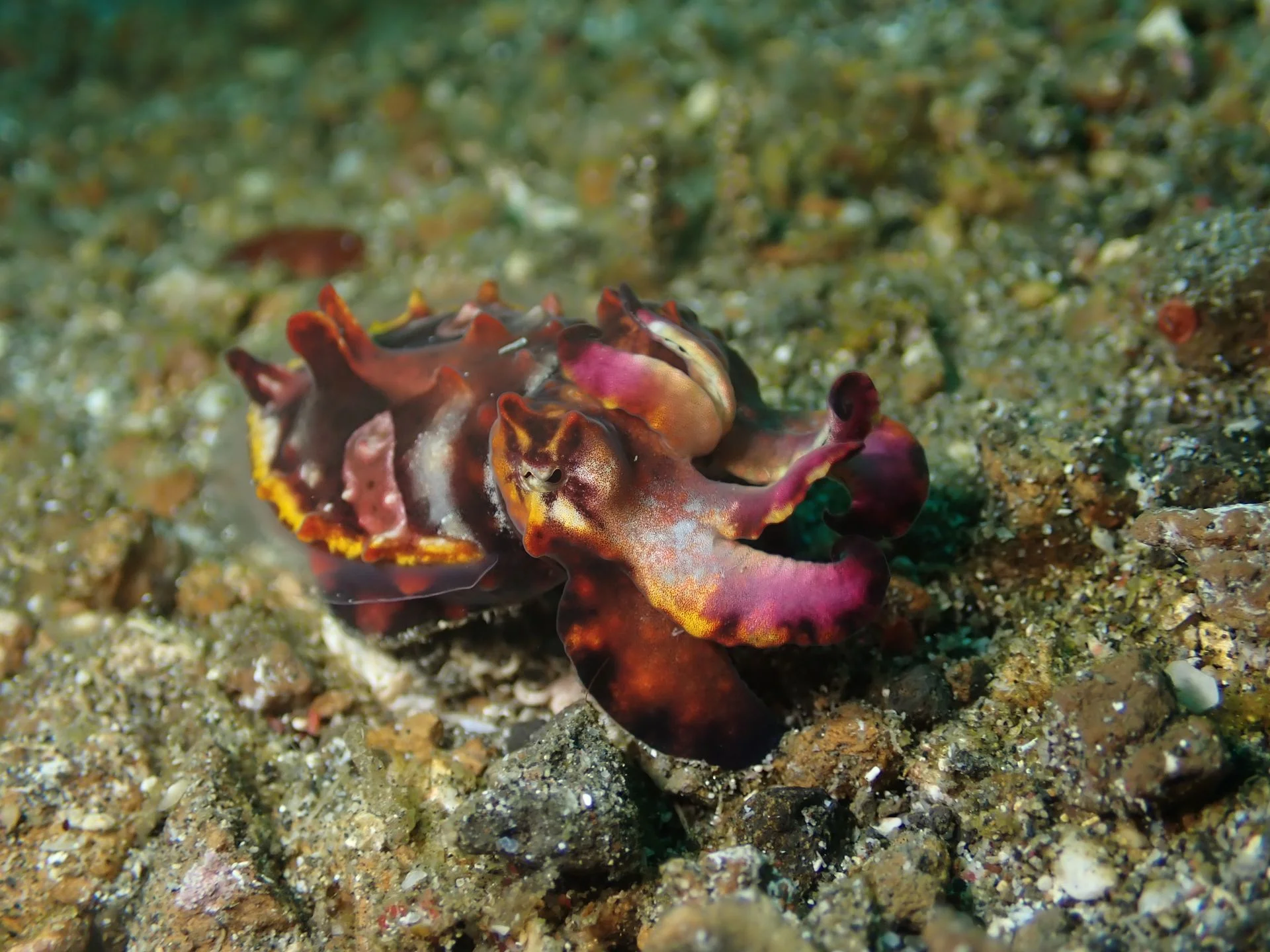
Lembeh
The Lembeh Strait in North Sulawesi has become famous as the muck‑diving capital of the world. At first glance its gently sloping seabed of black volcanic sand, rubble and discarded debris looks bleak. Look closer and it is teeming with weird and wonderful life: hairy and painted frogfish, flamboyant cuttlefish, mimic and blue‑ringed octopuses, ornate ghost pipefish, tiny seahorses, shrimp, crabs and a rainbow of nudibranchs. Most dives are shallow and calm with little current, making it an ideal playground for macro photographers. There are a few colourful reefs for a change of scenery, but Lembeh is all about searching the sand for critter treasures.
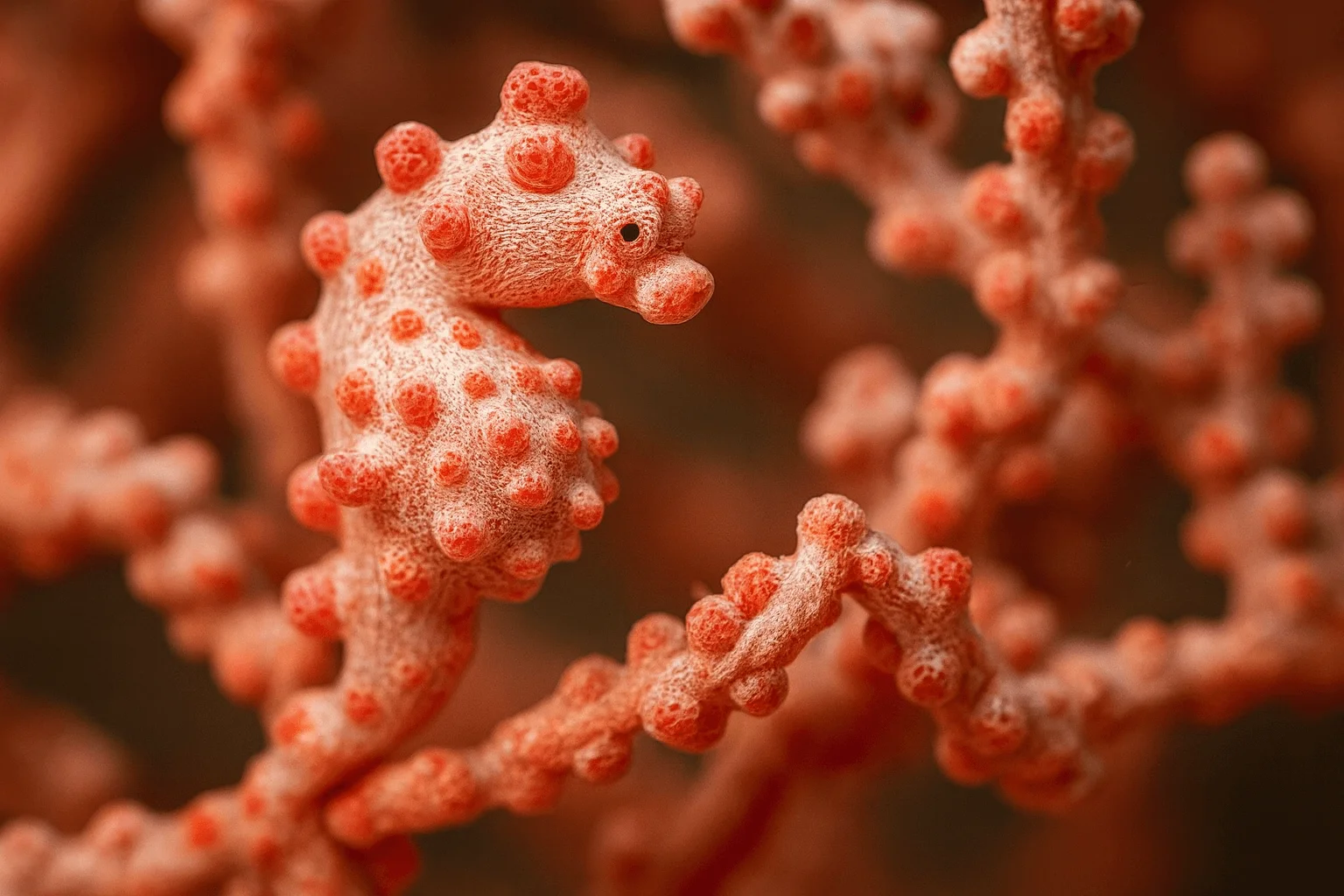
Anilao
Anilao, a small barangay in Batangas province just two hours south of Manila, is often called the macro capital of the Philippines. More than 50 dive sites fringe the coast and nearby islands, offering an intoxicating mix of coral‑covered pinnacles, muck slopes and blackwater encounters. Critter enthusiasts come for the legendary muck dives at Secret Bay and Anilao Pier, where mimic octopuses, blue‑ringed octopuses, wonderpus, seahorses, ghost pipefish, frogfish and dozens of nudibranch species lurk in the silt. Shallow reefs like Twin Rocks and Cathedral are covered in soft corals and teem with reef fish, while deeper sites such as Ligpo Island feature gorgonian‑covered walls and occasional drift. Because Anilao is so close to Manila and open year‑round, it’s the easiest place in the Philippines to squeeze in a quick diving getaway.
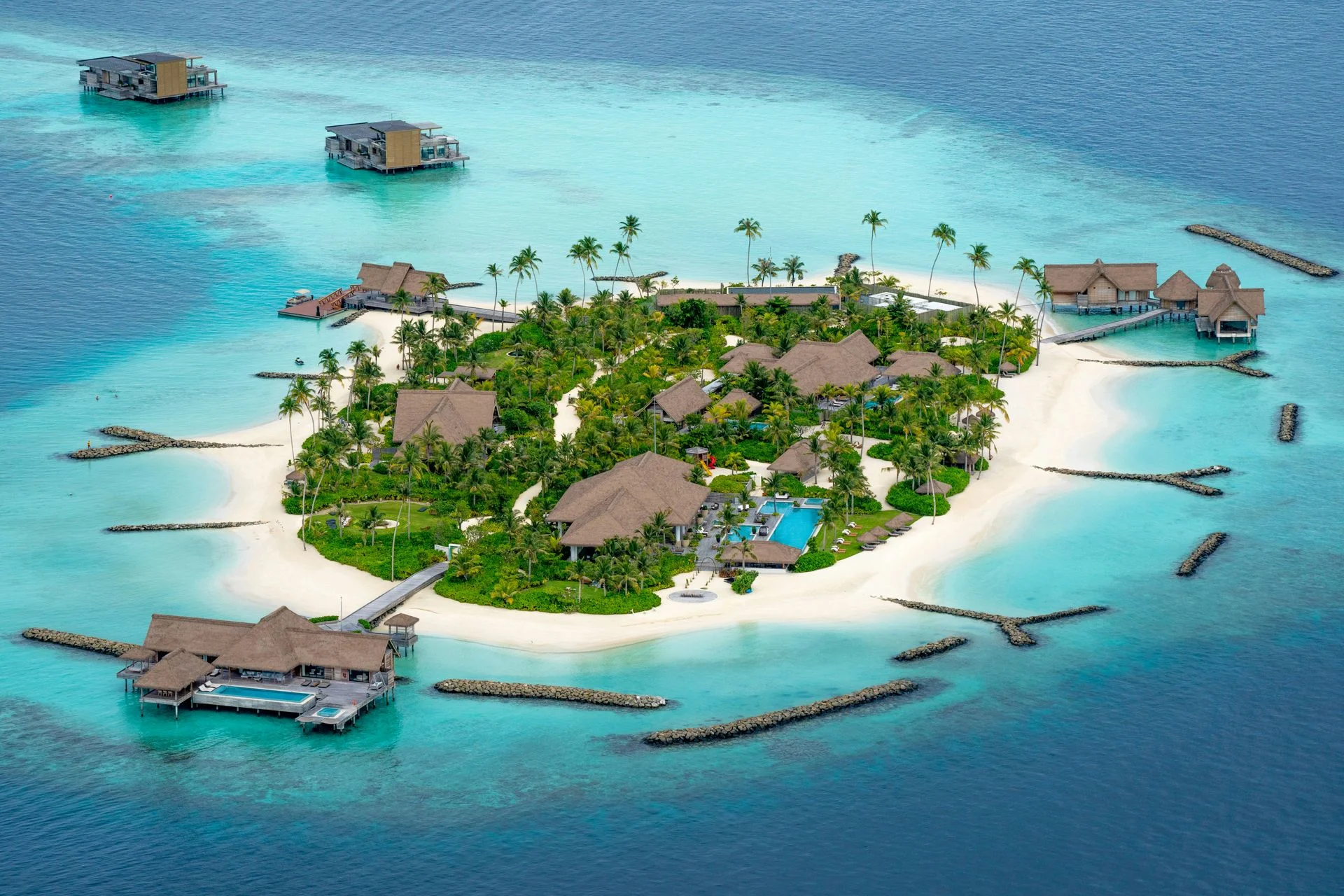
Maldives
Scattered across the Indian Ocean like strings of pearls, the Maldives’ 26 atolls encompass more than a thousand low‑lying islands, reefs and sandbanks. Beneath the turquoise surface are channels (kandus), pinnacles (thilas) and lagoons where powerful ocean currents sweep past colourful coral gardens. This nutrient‑rich flow attracts manta rays, whale sharks, reef sharks, schooling jacks, barracudas and every reef fish imaginable. Liveaboards and resort dive centres explore sites such as Okobe Thila and Kandooma Thila in the central atolls, manta cleaning stations in Baa and Ari, and shark‑filled channels like Fuvahmulah in the deep south. Diving here ranges from tranquil coral slopes to adrenalin‑fuelled drifts through current‑swept passes, making the Maldives a true pelagic playground.
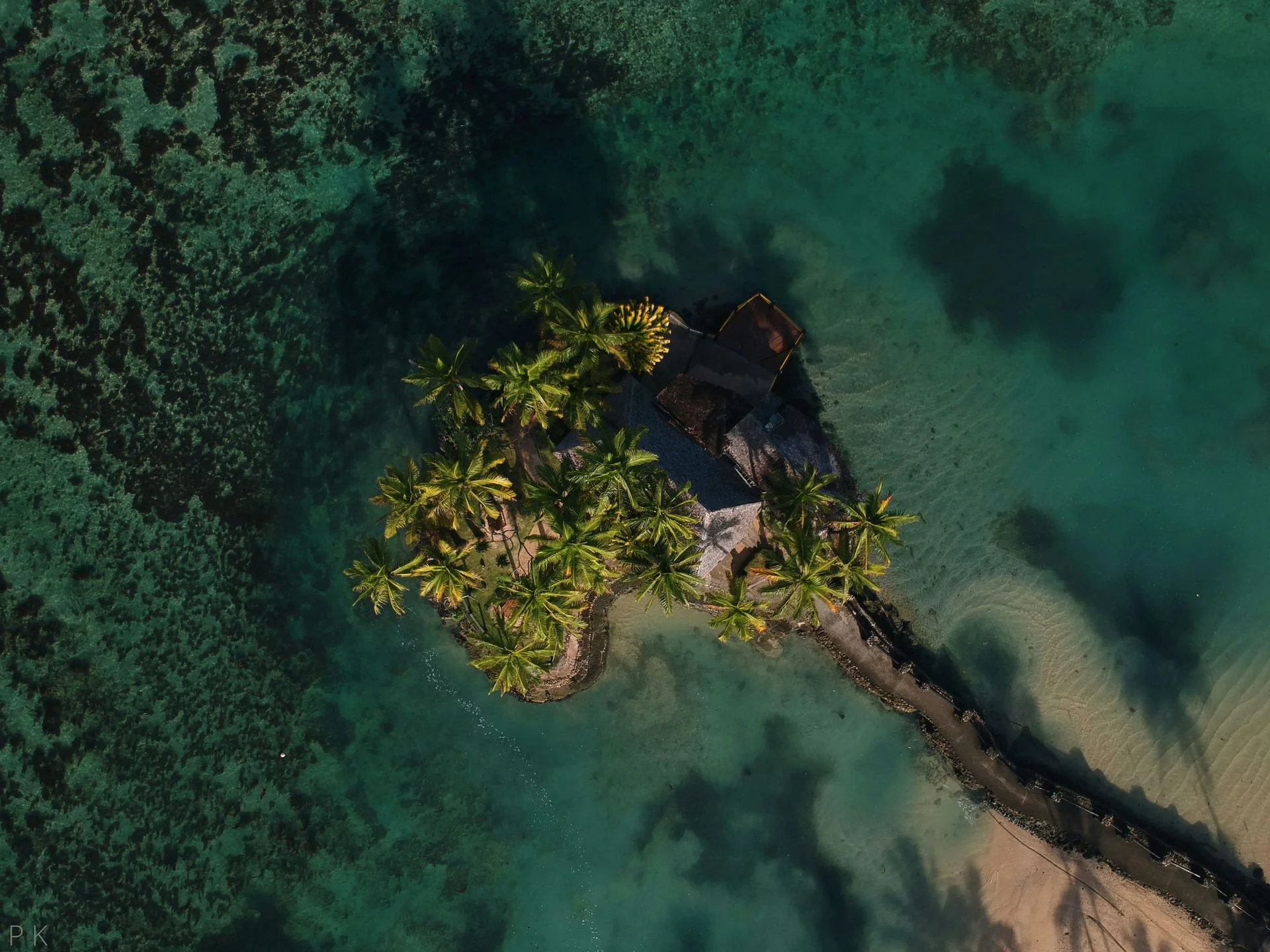
Fiji
Fiji sits like a necklace of more than 300 inhabited islands and 500 smaller islets in the heart of the South Pacific. Jacques Cousteau dubbed it the “soft coral capital of the world” for good reason – nutrient‑rich currents wash over sloping reefs, walls and bommies that erupt in shades of pink, purple, orange and yellow. The country’s dive sites range from kaleidoscopic coral gardens and pinnacles in the Somosomo Strait to shark dives in Beqa Lagoon, and remote passages in Bligh Water and the Koro Sea. Schools of barracuda, trevally and surgeonfish cruise above while manta rays, turtles, bull sharks and occasionally hammerheads glide past. Friendly locals and a relaxed island vibe make Fiji a favourite for both adventurous liveaboard trips and leisurely resort‑based diving.

Palau
Rising out of the western Pacific at the meeting point of two great oceans, Palau is an archipelago of more than 500 jungle‑cloaked islands and limestone rock pinnacles. Its barrier reef and scattered outcrops create caverns, walls, tunnels and channels where nutrient‑rich currents sweep in from the Philippine Sea. These flows feed carpets of hard and soft corals and attract vast schools of jacks, barracudas and snappers, as well as an impressive cast of pelagics. Grey reef and whitetip sharks parade along the legendary Blue Corner; manta rays glide back and forth through German Channel’s cleaning stations; and Ulong Channel offers a thrill‑ride drift over giant clams and lettuce corals. Between dives you can snorkel among non‑stinging jellyfish in Jellyfish Lake or explore WWII ship and plane wrecks covered in colourful sponges.